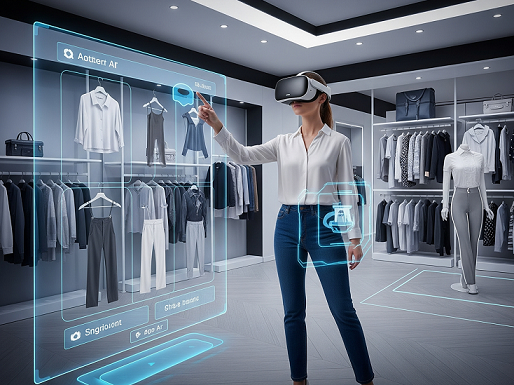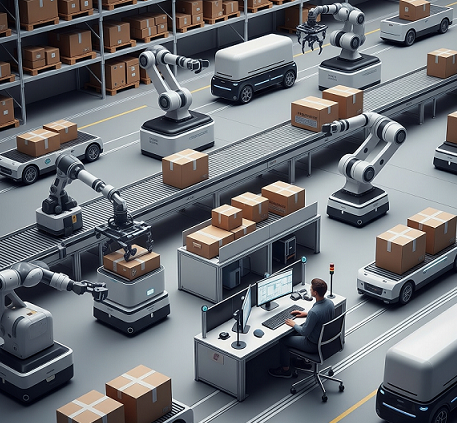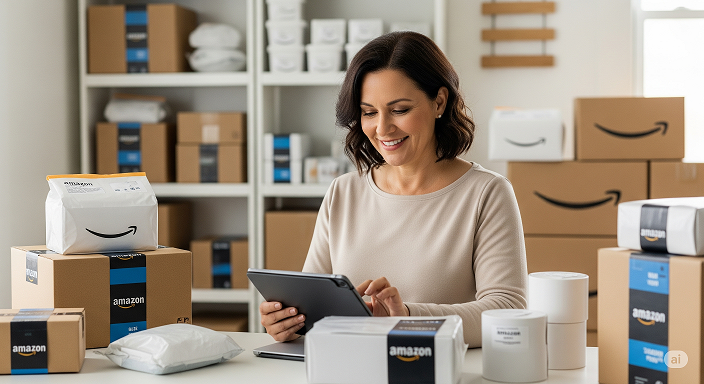The world of Amazon selling is dynamic, ever-evolving, and relentlessly driven by technological innovation. As we move further into the 2020s, staying ahead of the curve isn’t just an advantage, it’s a necessity. The businesses that embrace cutting-edge technologies will be the ones that thrive, transforming challenges into unprecedented opportunities.
Here’s how technology is poised to revolutionize your Amazon selling business:
1. The Reign of AI and Machine Learning (ML)

AI is no longer a futuristic concept; it’s the bedrock of modern e-commerce. For Amazon sellers, AI and ML will become indispensable across multiple facets of their operations:
- Hyper-Personalization: AI algorithms will analyze vast amounts of customer data – Browse history, purchase patterns, demographics – to deliver truly individualized shopping experiences. From personalized product recommendations on product pages to tailored marketing campaigns, AI will ensure your products reach the right customer at the right time, leading to higher conversion rates and customer loyalty. Amazon’s own “Project Amelia” is already leveraging generative AI to provide personalized recommendations and insights to sellers.
- Predictive Analytics for Inventory and Demand: Gone are the days of guesswork. AI-powered predictive analytics will forecast demand with remarkable accuracy, helping you optimize inventory levels, prevent stockouts, and reduce costly overstocking. This translates to improved cash flow and more efficient supply chain management.
- Automated Listing Optimization: Generating compelling product listings can be time-consuming. AI tools are already streamlining this process, creating rich titles, bullet points, and descriptions from minimal input. This not only saves time but also ensures listings are highly optimized for Amazon’s search algorithm and customer engagement.
- Customer Service Enhancement: AI-powered chatbots will continue to evolve, offering 24/7 instant support, answering common queries, and even guiding customers through the purchase process. This frees up human resources for more complex issues, enhancing customer satisfaction.
- Optimized Advertising Campaigns: AI will revolutionize Amazon Advertising. Sellers will leverage AI tools to automate bid management, identify profitable keywords, and optimize ad creatives in real-time, maximizing return on ad spend (ROAS) and improving campaign performance.
2. Immersive Shopping: Augmented and Virtual Reality

The traditional 2D online shopping experience is giving way to more immersive alternatives. AR and VR are set to bridge the gap between online Browse and real-world interaction:
- Virtual Try-Ons and Product Visualization: Imagine a customer virtually “trying on” a pair of shoes or seeing how a piece of furniture looks in their living room before making a purchase. AR technology, accessible through smartphones or smart glasses, will become increasingly common on Amazon, reducing return rates and boosting buyer confidence, especially in categories like fashion, home decor, and electronics. Amazon already offers “View in 3D” and “View in Your Room” features.
- Virtual Showrooms: VR could enable sellers to create fully digital showrooms where customers can explore products in a 3D environment, interact with virtual sales assistants, and get a better feel for product design and functionality. This replicates the in-store experience, offering a new dimension to online retail.
3. The Rise of Voice Commerce
Voice assistants like Amazon’s Alexa are becoming ubiquitous. This trend will significantly impact how customers discover and purchase products:

- Hands-Free Shopping: Voice commands will enable consumers to browse, search for products, and complete purchases without ever touching a screen. This hands-free convenience will drive faster checkouts and enhance accessibility for a wider range of customers.
- Personalized Voice Recommendations: As AI advances, voice assistants will offer highly personalized product suggestions based on past purchases and preferences, making voice shopping more intuitive and efficient. Sellers will need to optimize their product listings for voice search, using natural language keywords.
4. Blockchain for Transparency and Trust

While still in its nascent stages for mainstream e-commerce, blockchain technology holds immense potential for Amazon sellers:
- Enhanced Supply Chain Transparency: Blockchain can create an immutable and transparent record of a product’s journey from manufacturing to delivery. This can combat counterfeiting, ensure product authenticity, and provide consumers with greater confidence in the ethical sourcing and quality of their purchases.
- Secure Transactions and Data: Blockchain’s decentralized and encrypted nature can enhance the security of transactions and customer data, reducing fraud and building trust in the online marketplace.
5. Robotics and Advanced Logistics

Amazon’s fulfillment centers are already heavily reliant on robotics, and this will only intensify:
- Accelerated Fulfillment: Advanced robotics will continue to optimize warehouse operations, from sorting and lifting to packaging and shipping. This will lead to even faster delivery times, reduced operational costs, and greater efficiency in the fulfillment process.
- Autonomous Delivery: While still a long-term vision, autonomous delivery vehicles and drones could eventually play a role in last-mile delivery, further speeding up the process and reducing human intervention.
6. Sustainability at the Forefront
Conscious consumerism is a growing force. Future Amazon sellers must integrate sustainable practices, driven by technology:
- Eco-Friendly Packaging and Logistics: Innovations in sustainable packaging materials and optimized logistics powered by AI will help reduce environmental impact. Amazon’s “Climate Pledge Friendly” program is already encouraging sellers to adopt more sustainable practices.
- Transparency in Sourcing: Technology can provide greater transparency into ethical sourcing and manufacturing processes, allowing sellers to showcase their commitment to sustainability and resonate with eco-conscious buyers.
Preparing Your Business for the Future
The technological shifts in Amazon selling are not threats, but opportunities. To future-proof your business, consider these strategies:
- Embrace AI Tools: Invest in AI-powered tools for product research, listing optimization, advertising, and customer service.
- Explore Immersive Content: Start experimenting with 3D models and AR experiences for your product listings.
- Optimize for Voice Search: Begin thinking about how customers might search for your products using voice commands.
- Prioritize Sustainability: Look for ways to make your products and operations more environmentally friendly.
- Stay Agile and Adaptable: The tech landscape will continue to evolve rapidly. Cultivate a mindset of continuous learning and adaptation.
The future of Amazon selling is intrinsically linked to technological advancements. By understanding and proactively adopting these trends, sellers can not only survive but truly thrive in the increasingly competitive and exciting e-commerce landscape.








